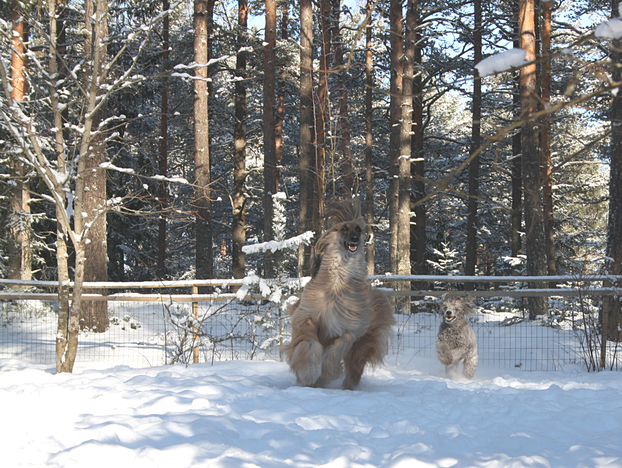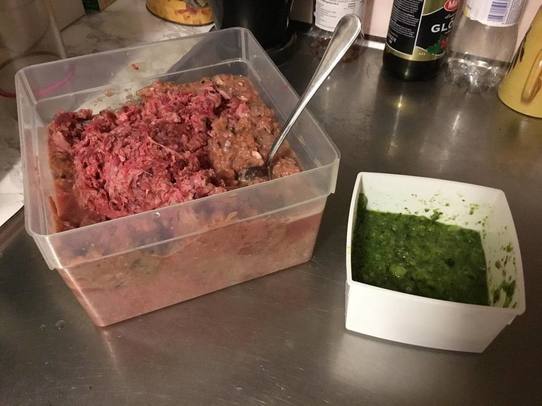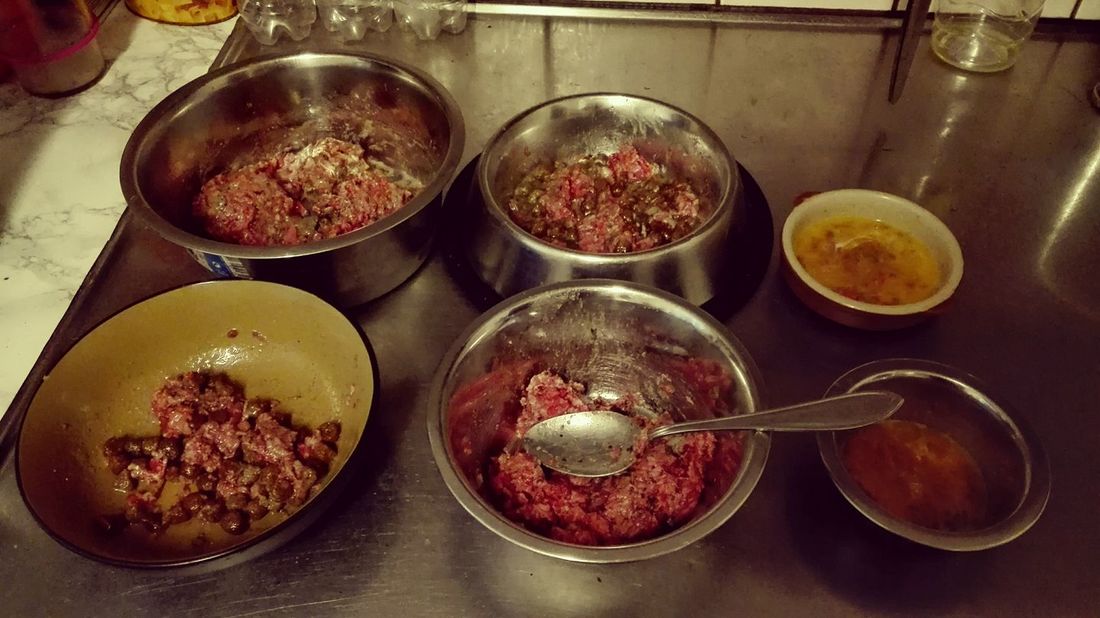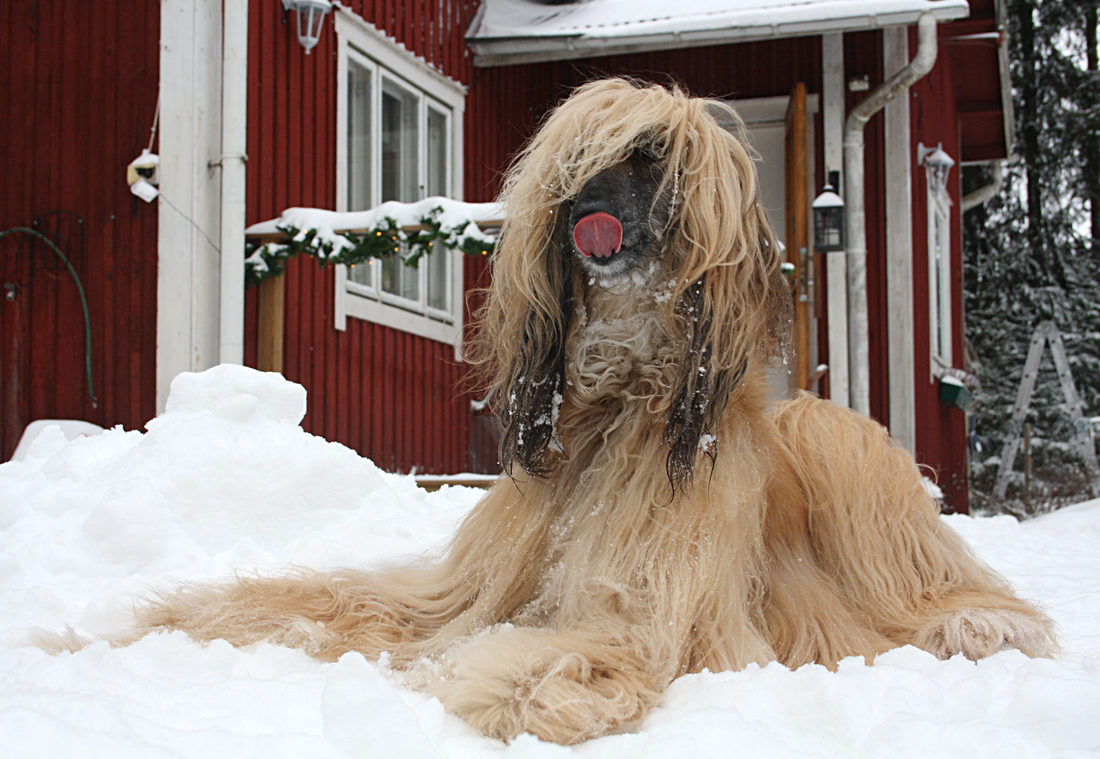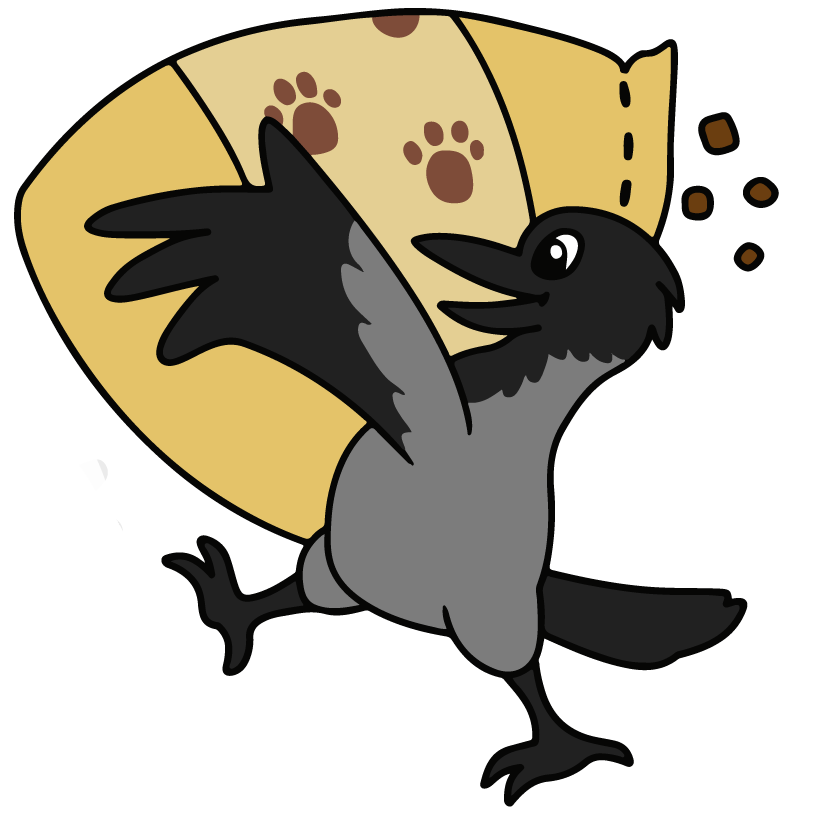Leadership problem is a term widely used withing trainers, owners and enthusiasts. While there is certain method to madness so to speak, assuming dogs see their human as a leader is false and proven wrong in multiple studies. But what is human to the dogs, then? |
| First of all, quality costs. I have a serious problem with some raw feeders and actually non-raw feeders too for choosing the cheap option JUST because ”no way I am paying that much”. It is common within raw feeders to use supplements meant for cows and other farm animals and just dilute them with water. They are still too strong to be given daily, so they are given once or twice a week. I have done this myself too with ADE liquid, but there is no real justification in that. I can't go on the whole week without eating any vitamins or minerals whatsoever and then eat one weeks amount of supplements on Sunday. It makes no sense. Most of the good stuff gets out of the system that way, and the very next day deficit is there again. Some use products meant for people. This is more OK, should you know what you are doing, but I don't feel comfortable doing that. The only thing I actually do use from the human side is fish liver oil, since it's the same exact product for both animals and people. My dogs eat 70 to 80 euros worth meat per month, depending on how much turkey I use. My preference is 50% turkey, 25% beef/pork and 25% fish, but since turkey is expensive, during some months I may go 50% pork/beef and 25% turkey instead. |
These two combined the expenses of the current diet would be 125 euros max, 105 euros min. To compare, feeding with complete food formula from MUSH the expenses would be around 130 to 140 euros. So, I save a little mixing the meats myself. This is only practical when owning many dogs. With one or two I'd surely go with complete raw food formula and just add zinc and D.
So, yes, it's expensive, HOWEVER we have to remember I have four dogs. If we divide that 125 euros with four, and then divide that with the average mathematical value of days per month, 30, we get whooping 1,04 euros per day per dog. From food specifically planned for this certain dog, from the best possible ingredients, 1 euro and 5 cents is hardly expensive.
Same goes with MUSH Vaisto.
How does it look irl?
Well, it looks like this:
I add 450 to 500 grams of meat mix I have prepared. This mix consists of 1000 grams of grounded turkey, 500 grams of grounded beef/pork, 500 grams of grounded fish and about 100 grams of veggies (usually grounded raw spinach, broccoli, cauliflower and carrots, along with some possible seasonal berries like cowberries, blueberries, apples, zucchini etc.)
To this I add supplements based on the dog's weight. For Mss. Dominance this would be about 2 grams of calcium in total, so I don't really add that much because the salmon I use already has calcium, a little bit of seaweed, 2 pills of Avital Biotin, 5ml of fish liver oil (when we use it), half a teaspoon or so of liver, some rapeseed oil (I hate that name, seriously), some sunflower oil, some grounded flax if needed. Sometimes I add lactic acid bacteria, sometimes I crack an egg there and reduce the amount of meat a bit.
It sounds like a hassle, and it is a bit, so I usually give all supplements during evening. In the morning I only give the meat mix with some added grounded flax and oils, because it's faster. I have more time to play jar bingo in the evening.
* just to mention, I do use Working Dog Hyaluron 365 for my boys every day, but as it's not a must, I left it out of this post. I talked about it more in my post about arthritis. We also have kibble days every now and then, usually when I forgot to defrost food, and boys get some kibble every day because they tend to get hungry during the night if they don't get kibble in the evening, but most of our diet is based on raw meat and the calculations above.
Breed specific traits play a huge part in the way dogs act. Sometimes during my consultations with people about their dogs as well as when talking with dog owners I learn the behavior that is seen as problematic is actually not problematic at all – it is a common trait met with certain types of dogs. It is highly desirable and beneficial when the dog is performing a task it was bred to perform. However, these modern days not many dogs get to do what they were originally bred to do. Most are meant to be pets. Many breeds have adapted to this and certain traits of theirs have been bred away, but this is not always the case. Often what is said to be a problem dog is actually not a problem at all – the problem is the environment it is living in.
Most of companion breeds are small. In FCI we have a whole group of companion and toy breeds. While some of the breeds are large or medium, companion dogs are often compatible with small modern apartments that don't have large yards or much room. Most of modern people live in cities and work long days, so having a dog that need tons of exercise and room and makes lots of noise just isn't practical.
Then why do people end up taking in breeds that still have strong instincts and breed specific traits that need special attention? If we have a whole group of companion breeds, why we have hunting breeds and high prey drive breeds ending up with families that find their behavior problematic?
Those good looks
The same thing happens regularly with hunting breeds. Some breeds like dachshunds can live happily as family pets as long as they get to use their energy in some breed specific way. They like to sniff around, dig and ”kill a prey”, and if their needs are not met, they are not happy. They start to act up. Sometimes people don't understand many of those show stars work outside the show ring, or they have large open areas they can use their hunting instincts on. Some flashy breeds like Weimaraners are still widely and often used as hunting dogs and they don't do well at all being just home pets. Luckily most breeders are strict with homes, but accidents happen.
Movies have a tendency to increase the demand of a breed. When Disney put out 101 Dalmatians, thousands of young dalmatians ended up searching for new homes during the next few years. People fell in love with the breed from the movie, and when they realized what they saw in the movie had nothing to do with the actual breed they got rid of the dog. Turned out ”Pongo” was far more interested in ripping the house up and launching at other dogs than it was finding the love of a lifetime for his owner.
Pumis and schipperkes are great examples of breeds that look simply adorable but are actually pretty hard-headed and active. They are not for everyone, yet their looks have led many people taking in a pup and later giving it up when it turned out far less adorable than they thought.
To add to all the above, there is a trend to go for the working line of the breed instead of the usually more calm show line. Working lines tend to loos less exaggerated, but that is not the only way they differ from the show line. They are usually far more active and they require more things to do. Someone who just took one in because it looked better than the puffy show star may be up for a surprise if the needs of the working dog are not met.
All of this applies also to breed mixes. It is harder to tell how a mixed breed dog will end up when it's older, but it's parents can tell us a lot. If the breeds in the ancestry are known, we can also assume something about the possible breed related traits the dog may end up having. All this should be taken into consideration when thinking about buying a pup, no matter how adorable or cool the puppies and the parents look like.
Frustration
Sometimes the dog will end up doing what it was bred to do but with some unwanted target. This is the most common with herding breeds starting to herd cars, bicycles or people, or cattle dogs nibbling at ankles. Guarding dogs can turn very dangerously territorial and alerting dogs often alert about every small sound they hear. This is the case with many small spitz that live in towns. It's in their nature to alert. They do what they were bred to do, no matter the neighbors may disagree.
All above can be controlled with training to a certain point, but in most cases the problem remains for as long as the dog is frustrated. This means the only solution would be to combine training with some breed specific hobby. Luckily, dogs are not that picky with their hobbies. They don't know if the lure they chase is alive, they just enjoy chasing it. Dachshunds may be all happy tracking down pieces of beef in some man made tunnels and herding breeds can try their luck with experienced shepherd and some sheep that are used to being herded by dogs. They can also enjoy some other activity where they can work with their owner and focus.
It's way easier to live with a dog that fits your life style than trying to learn a new way of life to adapt to your dog. This is why one should be extra careful when picking a breed or a breed mix. We will later discuss about some traits of individual dogs and how important it is to pick the right puppy from the litter, but to get to that point we need to understand the importance of picking the breed first.
If you enjoy short walks and relaxing on the cough watching TV or reading a good book, find a companion breed. It doesn't matter if you have always wanted a rottweiler. If you don't live a life fit for a rottweiler, don't take it in. No breed should be chosen just based on how cool it looks. Many people who struggle with their large strong working breed for years could have been completely happy with a small companion breed. This goes vice versa, too; if you are an active outdoors person who loves hikes and wants a dog that can keep up and maybe even accompany you to hunting grounds, maybe don't pick a French bulldog.
Change of Ways
There is nothing I or any other trainer or consultant can do if the dog lives in a home that is not fit for it. The owner needs to be ready to change their ways if that is what the dog needs. This means if they have a hunting dog, they need to find a way to answer to it's need to track, for example. If they have a sighthound, it needs to run free. If they have a husky, it needs to work. If they have a Belgian shepherd malinois, it needs stuff to do and things to think. Exercise. There is no cure to a breed specific trait, and there should not be. The human is the one that took the dog in, and if the dog is to stay in the family the human must answer to it's needs. There may be some other problems too that need training and working on, but the general problem of totally wrong kind of environment needs to be attacked first. Only after that those other behavioral issues can be worked with. Sometimes there even isn't any other problem. Boredom and frustration cause many kind of problematic behavior, not to mention sometimes the whole ”problematic behavior” is actually the dog performing a task it's meant to perform. It's owners just simply find it difficult to work with.
The problem with many TV superstar trainers is the idea of ”fixing” the dog's ”problems” when in many cases the actual problem is the human being who fails to meet the needs of his/her dog. Teaching the dog a trick with pieces of cheese or hissing and correcting it when it growls is reacting to behavior that is caused by some bigger issue. Shows have limited TV time and no matter there is lot of work put in every dog, viewers only see a fracture of it. This can lead to thinking hiring a trainer to meet the dog a couple of times is a solution to one's problems. Unfortunately some so called trainers know this and they end up taking people's money and giving them lots of bad advice when in reality the problem behind the behavior is never even figured out. They may even take the dog in to participate in ”a camp”, but when the dog returns so do the problems should it be they are caused by frustration.
There really is no highway to Heaven here. Unfortunately, if the owner isn't willing to work with the dog and answer to it's needs, there is nothing anyone can do. The only way to make sure this so called problem behavior stops is to make sure the dog gets to be what it's instincts tell it to be. Obviously there are dogs that have bad nerves, traumatized dogs and ill dogs that are pain, but those dogs are a completely new story. It's way more common to meet dogs that would have no problems at all if the people owning them would pay some attention to what their dog is and find a way to let it behave like it's supposed to.
We can choose to see that breed specific behavior as a problem, or we can try and build something out of it. I prefer the latter.
Mistä on kyse?
Koko elämänsä koiria harrastaneen raakaruokintafriikin ajatuksia, pohdintoja ja elämää koiralauman kanssa.
Historia
June 2022
October 2021
September 2021
August 2021
July 2021
June 2021
May 2021
April 2021
March 2021
February 2021
January 2021
December 2020
August 2019
January 2019
November 2018
October 2018
September 2018
July 2018
June 2018
May 2018
April 2018
March 2018
February 2018
January 2018
December 2017
June 2017
August 2016
May 2016
February 2016
August 2015
Kategoriat
All
Development
Elekieli
Exercise
Feeding
Health
Koiranlukutaito
Koirarodut
Learning
Näyttelyt
Negative Reinforcement
Oppiminen
Positiivinen Vahvistaminen
Positiivisuus
Positive Reinforcement
Rodunomaisuus
Rodut
Shows
Training

